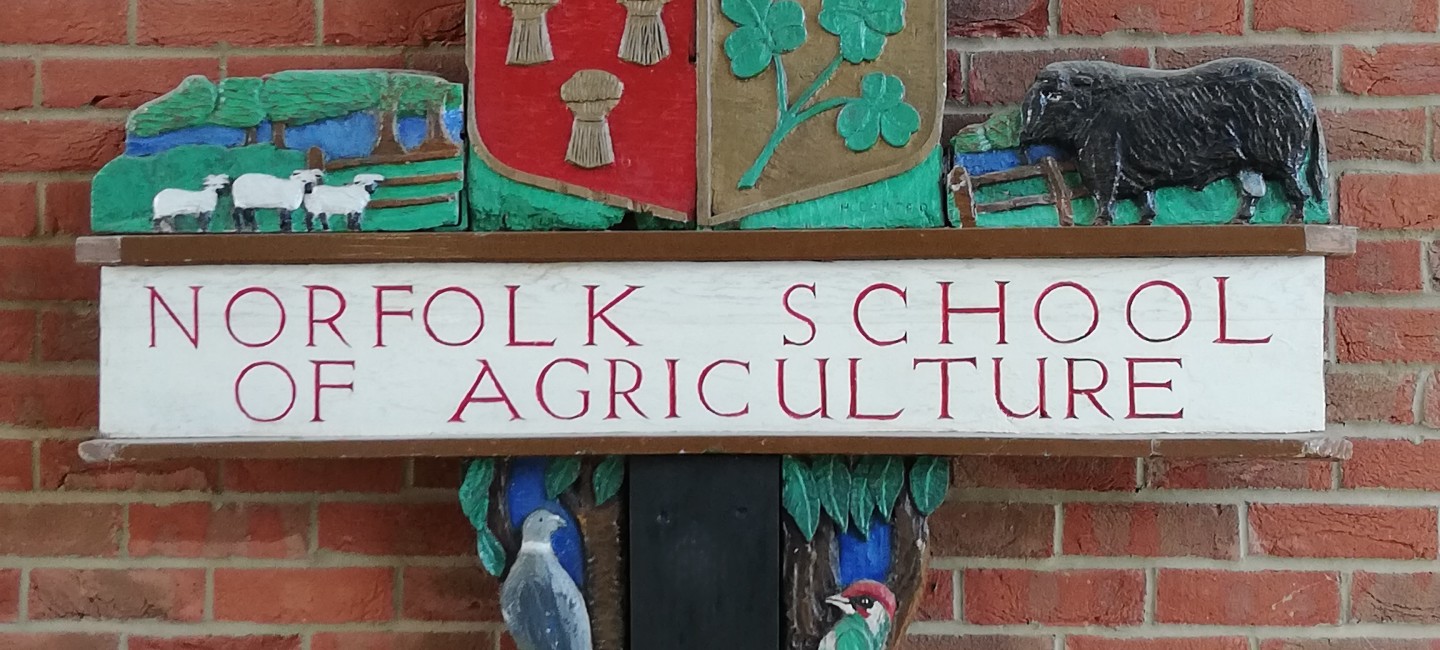History of Easton College
Easton College has been providing education and training to meet the needs of the agricultural sector in Norfolk for almost three-quarters of a Century. It has progressively diversified its curriculum over time, especially since the early 1990s, to become the multi-disciplinary land-based college that it is today.
Origins of agricultural education in Norfolk
Easton College can trace its roots to three separate institutions. The first of these is the Burlingham College of Horticulture. The College of Horticulture was established by Norfolk County Council following the purchase of the Burlingham House estate in the early 1920s.
Burlingham College of Horticulture played a key role in the development of the growing fruit industry in Norfolk; it was also an integral part of the County Council’s development of a smallholding estate. The college also played a substantial role in fruit growing research.
Over the years Burlingham College of Horticulture became involved in most areas of horticulture, including sports turf and amenity horticulture. It also had substantial glass facilities for commercial crop growing, such as tomatoes.
The next strand in the evolution of agricultural education began with the development of technical training courses by the Norfolk Agricultural Station (now The Morley Agricultural Foundation) under the guidance of its Director Frank Rayns. These tended to be specific technical courses directly related to the Agriculture Station’s work.
Following the Second World War, new government legislation sought to modernize farming, including through more formal agricultural education. Initially in Norfolk this was provided by a team of staff based at Norfolk County Council and delivered at Woodbastwick. The Extra Mural Department ran part-time agriculture courses, as well as supporting the Norfolk Farm Machinery Club (NORMAC), Norfolk Livestock Club, and Young Farmers Club as part of its outreach work.
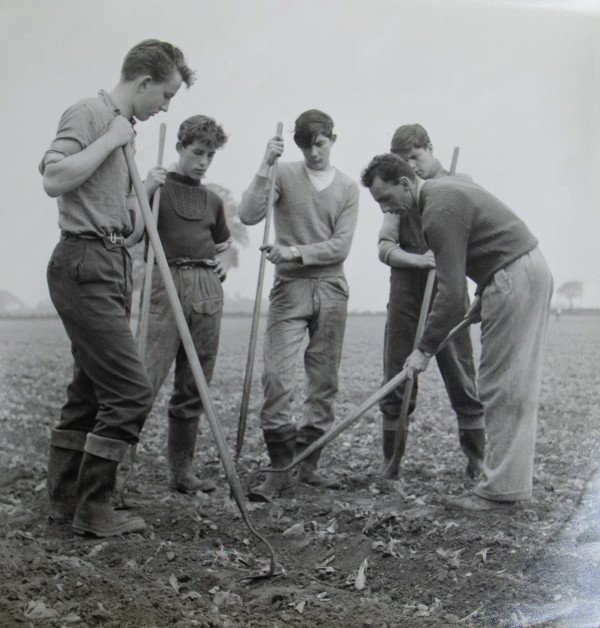
Agriculture lecturer and students (1950s).
Bringing together agricultural and horticultural training
In 1949, Norfolk County Council purchased the Easton Hall estate to create the Norfolk School of Agriculture. The School brought together, but did not formally merge, each of these strands of agricultural training. Not only was the work from Burlingham transferred to Easton, one of the glasshouses came too - and is still used to this day.
The School’s primary focus was providing courses for school leavers. In the early years, teaching was done in a building on the back of Easton Hall. The first purpose-built building for teaching, the Garnett Building (named after the first Principal), was opened in 1953.
Students boarded at Wymondham College, and were bussed to Easton, until the first on-site accommodation for 40 students was completed in 1953. Residential students were looked after by a full-time warden and a matron; blazers were to be worn in the dining room and ‘lights out’ was at 9.30pm.
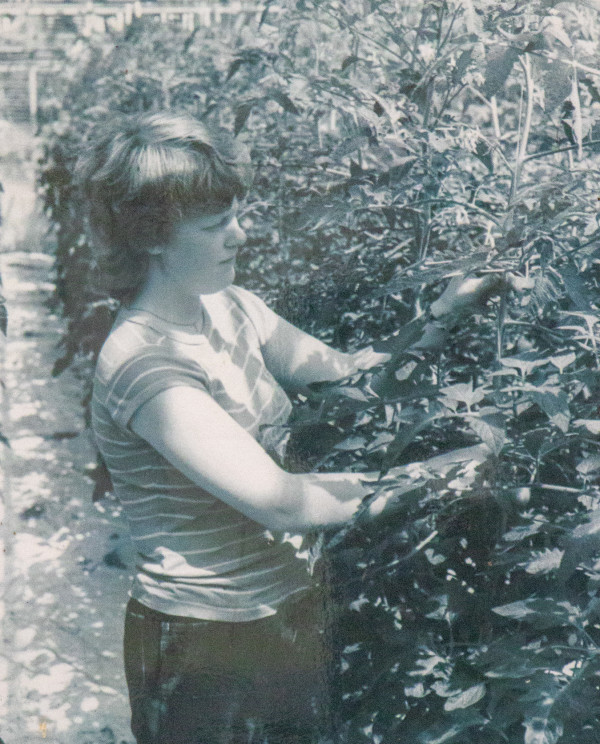
One of the college's horticultural student (1970s).
Development of the farm
The estate provided 700 acres of land that was available to support students’ practical learning. The annual farm guide produced by the Norfolk School of Agriculture makes clear that it took a considerable amount of work to get the farmland and buildings from their post-war “run-down state” to a position where the farm was both commercially viable and suitable for supporting students’ learning.
In 1958, the main crops being cultivated were wheat (107 acres), barley (75 acres), sugar beet (64 acres), oats (48 acres), peas (30 acres), and potatoes (14 acres). The farm’s livestock was made up of 187 cattle and calves, 339 pigs, 3 horses, and more than 3,000 poultry. More than 20 permanent staff were employed to work on the farm at the time.
A joint inspection report by the Ministry of Education and the Ministry of Agriculture, Fisheries and Food, compiled during 1955-56, stressed the pivotal importance of the farm to the success of the college as a whole:
A commercially successful farm is all important to the wellbeing of the Institute. Not only is it essential as the centre piece of teaching – whether in the classroom or on the farm itself – but it is the only certain way of gaining the confidence of the farming community and of ensuring a satisfactory entry of students.”
The importance of the farm to the college continues to this day. It not only provides practical learning opportunities for students to gain the knowledge and skills needed to achieve their qualifications; it also helps prepare them for the big changes that are transforming farming in the 21st Century – from sustainability, to supporting biodiversity, lowering the carbon footprint of food production, and the increasing role of digitalization and AI in agricultural technology.
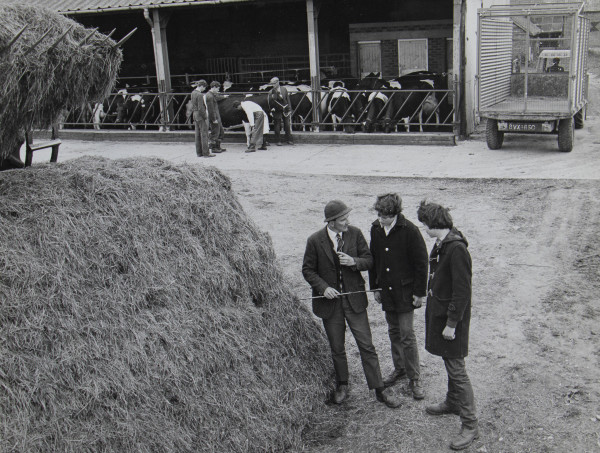
The cattle shed on the college's Model Farm.
Diversification into countryside management, arboriculture and floristry
In 1974, with the retirement of the late Bill Garnett as Principal of the Norfolk School of Agriculture, the decision was made to merge all three arms of agricultural education in the county into one. David Crowe was appointed as the first Principal of the newly formed Norfolk College of Agriculture and Horticulture.
Agriculture and horticulture remained the primary focus of the college until the 1990s. The rural economy had been changing over this period and in the late 1980s the pace of change accelerated. The college responded to these changes by diversifying in a similar way.
Courses in conservation and countryside management, floristry, and arboriculture were introduced in 1991. To reflect these changes in its provision, the college changed its name to Easton College, with the strapline ‘Norfolk’s college of the countryside.’
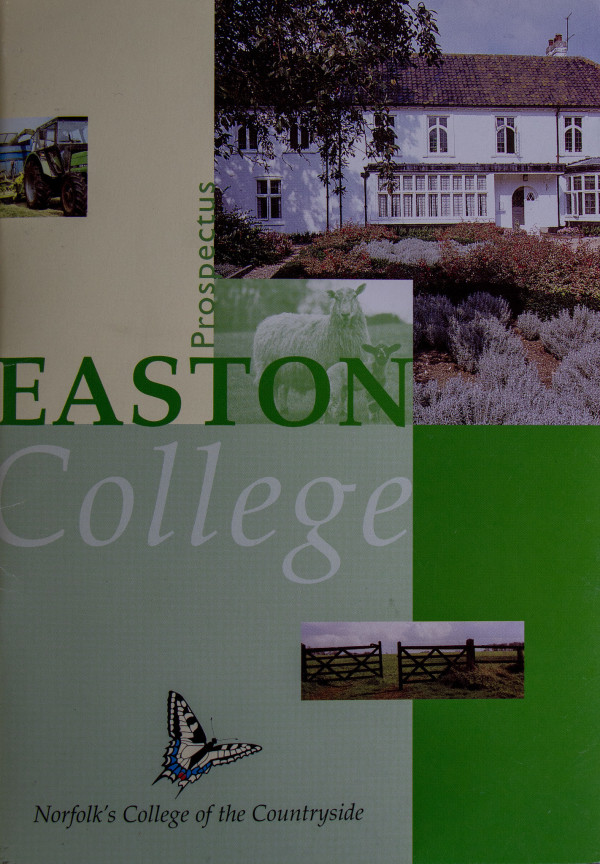
The college's 2000 prospectus when the strapline was 'Norfolk's College of the Countryside'.
Independent status and development of equestrian, animal care and sports courses
In 1993 the government gave all further education colleges independent status, which brought with it new freedoms to develop the curriculum in response to local demand and skills needs.
There was further broadening of the curriculum at Easton College, with the introduction of equestrian courses and the development of a joint equestrian centre with the Royal Norfolk Agricultural Association on the Norfolk Showground. Animal care courses were also added to the college offer, supported by the development of a new specialist facility for training in the care of pets, veterinary nursing, and pet shop work.
At the same time, the college experienced declining demand for training in the fruit and commercial glasshouse sector. This was a result of the increasing globalisation of the fruit and vegetable industry, brought about by improvements in refrigeration, logistics, and genetics, which all had an impact on the horticultural sector in Norfolk. The college closed the College of Horticulture site at Burlingham, transferring its work to the Easton campus.
Further expansion of the curriculum was seen as necessary for the long-term sustainability of the college. Following an appeal to landowners and farmers in Norfolk, and with support from Sport England and others, a new Sports and Conference Centre was opened in 1998. The college has maintained a strong commitment to the development of its sports facilities and courses ever since – notably with the opening of the Tennis Centre in 2009 and the advent of the Norfolk Institute for Sport (launching in 2024).
Another dimension to the expansion of the curriculum was the development of courses for 14- to 16-year-olds, who attended the college to study vocational subjects (usually for one day a week) whilst still at school. By 2006 the college was working with 36 high schools to offer this provision.
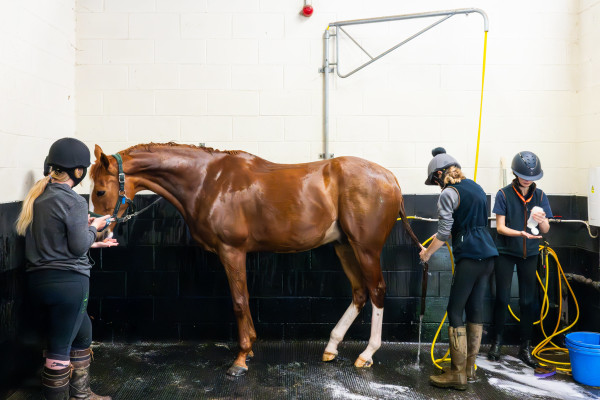
Equestrian students (2024).
Merger and de-merger
In 2012, Easton College and Otley College merged to form Easton & Otley College, bringing together land-based training across Norfolk and Suffolk. Further development of the facilities at Easton continued with the opening of a new Centre for Animal Science and Welfare (2013) and Construction Skills Centre (2015).
However, just 8 years after the merger, the Further Education Commissioner recommended the de-merger of Easton & Otley College. In 2020, the Otley campus merged with Suffolk New College (becoming Suffolk Rural) and the Easton campus regained the Easton College name as it merged with City College Norwich.
Timeline
1951 – Opened as the Norfolk School of Agriculture following the purchase of the farms in 1949. The first students were taught in a new purpose-built building, the Garnett Building (named after the first Principal, Bill Garnett), at the back of Easton Hall. Students commuted on a daily basis from their accommodation at Wymondham College.
1953 – The first on-site residential accommodation, Alston Hall (named after James Alston, Chairman of Governors, 1950-58), was opened.
1966 – Hudson Hall (named after Dr Harold G Hudson, Chairman of Governors, 1958-1981) was opened, providing accommodation for a further 40 students.
1967 - New library and classrooms opened.
1969 - Rayns Hall (named after the Director of the Norfolk Agricultural Station) was opened, providing an additional 20 study bedrooms.
1974 – The College merged with the older Horticultural College at Burlingham (established in 1920) and the Extra Mural Department of the County Council to become the Norfolk College of Agriculture and Horticulture.
1983 – A new irrigation mains line was installed into the following fields: Stoney Breck, 10 Acres, Colton Road, and Broom Close.
1984 – Four new condor bins (square bins for cereal storage) were built at Model Farm, each with a capacity of 40 tonnes. This brought the total number of bins at the college to 12.
1987 – A new irrigation pump was installed near the river to ensure the correct water pressure could be maintained through the irrigation system.
1991 – The name of the college was changed to Easton College to reflect the broader curriculum that was by then being taught. There were new courses in floristry, conservation, countryside management, and agriculture.
1992 – Closure of the College of Horticulture at Burlingham and the transfer of its work to Easton.
1993 – The college became an independent institution leaving the County Council’s control.
1993 – Equestrian courses were added and a joint equestrian centre, located on the Norfolk showground, was developed in conjunction with the Royal Norfolk Agricultural Association. This subsequently expanded to included courses such as veterinary nurse training. Garden design and interior design were also added to the college’s course offer.
1995 – Educational barns opened to offer farm tours and careers days to local schools; this initiative was supported by the Clan Trust, Chadacre Trust, and the Royal Norfolk Agricultural Association.
1998 – The Sports and Conference Centre was opened following an appeal to landowners and farmers in Norfolk and support from Sir Nicholas Bacon, Sport England and others. The new facilities included the Ken Leggett sports hall, named after the driving force behind the fundraising for the new building.
2003 – 50 years after the opening of the original teaching building, the first phase of a new teaching building was completed and named the Jubilee Building.
2005 – Easton College commences partnership with UEA to support the delivery of Higher-level qualifications and courses.
2006 – The second phase of the Jubilee Building was completed.
2009 – The Tennis Centre, Bradley Hall, and the Sir Nicholas Bacon Equestrian Centre (named after the Chairman of Governors) were all opened.
2010 – The final phase of the Jubilee Building was completed.
2012 – Easton College and Otley College merged to form Easton & Otley College.
2013 – The Michael Gamble Centre for Animal Science and Welfare (named after the Chairman of Governors) was opened.
2015 – The David Lawrence Construction Skills Centre (named after the former Principal) was opened.
2020 – De-merger of Easton & Otley College, with the Easton campus once again being named Easton College as part of its merger with City College Norwich.
2025 – Easton College Centre of Excellence for Sport launched.
